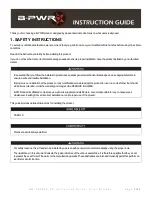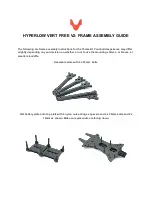
Webasto Thermosysteme
Roof-top air-conditioning system CC4E
Page 25 / 32
5.5.
Operation
NOTE
Note the instructions in chapter 5.2.
Prior to operation ensure that:
- air conditioning system is in serviceable condition.
- scheduled maintenance / checks have been performed.
- air inlets and outlets are unobstructed (no leaves, etc.)
- condensation water drain holes are unobstructed.
Operation of the system:
a)
The system is controlled by means of the rocker switches ON / OFF and the fan switch.
b)
The interior of the vehicle is cooled in recirculation mode, in keeping with the set fan speed 1, 2 or 3.
c)
The temperature of the air-conditioning system CC4E without electronic room thermostat is
controlled via the anti-icing thermostat in the system, which switches off the electric motor when the
temperature at which ice forms on the evaporator is reached. The evaporator and condenser fans
continue to run. The electric motor is switched on again when the threshold temperature of the anti-
icing thermostat is exceeded.
d)
Manual control of the cooling performance may be achieved by means of fan power stage selection.
Stage 1:
low cooling performance at low air outlet temperature and low fan power
Stage 2:
mid cooling performance at mid air outlet temperature and mid fan power
Stage 3:
high cooling performance at somewhat higher air outlet temperature and maximum fan
power
NOTE
In order to cool and dehumidify the interior of the vehicle after standing for
a long time in high outside temperatures and direct sunlight, it is advisable
to switch the fan to speed 3 at first. It can then be turned down to speed 2
or 1, depending on the outside temperature, when a pleasant temperature
has been achieved inside the vehicle.
5.6.
Operation of the air-conditioning system (deluxe version)
Operation is as described in 5.5 for the basic version.
In addition, the temperature can be selected via a setpoint potentiometer (optional) with knob. The electric
motor is switched off when the set temperature is reached. The electric motor is switched on again when
the temperature increases again by approx. 2 °C.










































